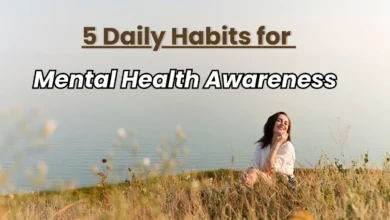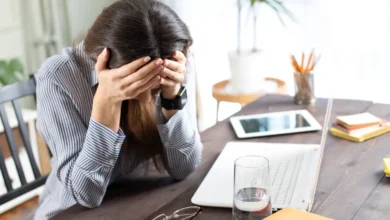Art Therapy for Mental Health: How Creativity Boosts Mental Health

When was the last time you picked up a crayon and let your imagination run wild? No pressure, but if your answer is somewhere between “third grade” and “never,” then maybe it’s time we had a little heart-to-heart. Because making art isn’t just for kids, professionals, or people with a Pinterest board labeled “aesthetic.” It’s for you. Especially when life feels heavy, loud, or just plain confusing. Art therapy for mental health is an ideal way to reconnect with your creativity
Art Therapy For Mental Health: Not Just Finger Painting for Adults (Though, Honestly, That Sounds Fun Too)
Let’s get one thing straight: art therapy isn’t about being “good” at art.
Art therapy is backed by real science, used by real mental health professionals, and it’s one of the gentlest tools for emotional healing out there. You don’t have to talk about what you’re feeling—you just have to show up, let your hands move, and see what comes out.
How Art Therapy for Mental Health Supports Your Well-being (Even If Your Stick Figures Are Struggling)
You might be wondering: “Okay, but how does painting or doodling actually help me feel better?”
Here’s the beautiful part—when you create, your brain gets a break from the constant noise.
Studies have shown that even simple creative tasks can:
- Lower stress hormone levels
- Improve emotional regulation
- Increase mindfulness and focus
- Provide a gentle, non-verbal way to process anxiety, trauma, or depression
You don’t need a therapy session or a meditation retreat—sometimes all it takes is a piece of paper, a little color, and permission to let go for a while.
Why This Works (Even When You’re Just Scribbling)
Let’s look at the emotional magic behind art therapy:
i) It helps you unwind
Ever notice how time kind of disappears when you’re sketching or coloring? That’s your nervous system calming down. Creating puts your brain into a meditative state, and that’s something we all could use a little more of.
ii) It gives you a voice when words are hard
Some feelings are too complex or too raw to talk about. That’s okay. Art can hold them for you—no explanations needed.

iii) It makes space for healing
You don’t have to know exactly what’s wrong to begin healing. Sometimes, it starts with a quiet moment and a brushstroke. Art can surface emotions gently, without forcing them.
iv) It builds quiet confidence
Creating something—even if it’s a little messy or strange-looking—can make you feel grounded and proud. It says: “Hey, I showed up for myself today.” And that matters more than you think.
The “I’m Not an Artist” Myth (Let’s Bust It)-Art Therapy for Mental Health
If you’ve ever said, “But I’m not creative” or “I can’t draw to save my life”—you’re in good company.
Most of us feel that way.
But here’s the thing: you don’t need to be an artist. You just need to be honest.
Art therapy doesn’t care about technique. It cares about truth.
If what you create looks like a confused avocado, that’s still valid. That’s still you. And that’s still healing.
Creative Coping You Can Try at Home (No Fancy Supplies Needed)
You don’t need a therapist, a studio, or a closet full of acrylics to get started. You just need a little curiosity and the courage to pick up whatever’s nearby—crayons, pens, old magazines.
Here are a few gentle ideas to help you explore your feelings through creativity:
- Try assigning color to your emotions: Think about how you’re feeling right now. Is it stormy gray? Soft blue? Fiery red? Choose a color or two that match your mood and create something using only those shades. Let the emotion lead you.
- Visual journaling: draw your day: Instead of writing about your day, sketch it out. It doesn’t matter if it’s just stick figures or messy lines. The goal isn’t to be perfect—it’s to reflect, release, and connect.
- Make a collage that mirrors your mood: Cut out words, images, and colors from old magazines or newspapers. Arrange them in a way that feels like how you’re feeling inside. There’s something deeply satisfying about creating a visual story for emotions that don’t have language yet.
- Sketch your safe space: Draw a place—real or imagined—where you feel calm, grounded, and safe. Maybe it’s your childhood bedroom. Maybe it’s a forest, a cabin, or just a couch under a blanket. This image can become your inner sanctuary when things feel too much.
You’re Not Alone in Wanting This Art Therapy for Mental Health
People all over the world are searching for ways to cope—ways that feel gentle, meaningful, and real.
Searches for things like:
- “How can art help mental health?”
- “Creative activities for emotional healing”
- “DIY art therapy exercises”
This isn’t just a trend.
It’s a sign that we’re all craving less pressure, more peace. And maybe, more color in our lives.
So… Have You Tried It?
Have you ever filled a page with scribbles just because you needed to do something with the chaos inside?
Painted a color that matched your heartache?
Made something that made no sense—but made you feel better?
Or maybe this is all new to you, and you’re just curious. That’s more than enough.
If something in you feels drawn to this, follow it. Even if all you do is pick up a pencil and make a line. That’s a beginning, opening, showing up for yourself.
Conclusion: Art Therapy for Mental Health
Here’s the truth—healing isn’t always quiet or polished.
Sometimes, it’s raw, confusing. Sometimes it looks like a crumpled piece of paper covered in colors you can’t name.
And that’s okay.
You don’t need permission to create, to be good at it.
You just need to give yourself the chance.
Make a mess.
Let it be weird.
Let it be real.
Because maybe what you’re creating isn’t just art—maybe it’s understanding. Maybe it’s a little bit of freedom. Maybe it’s the beginning of feeling like yourself again.
And if that sounds like something you need… you’re not alone.




One Comment